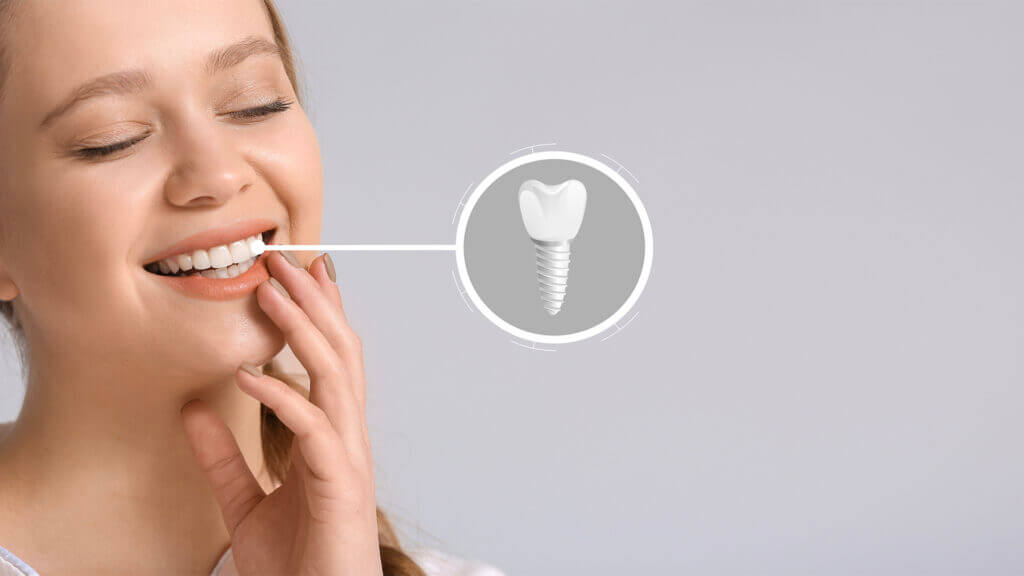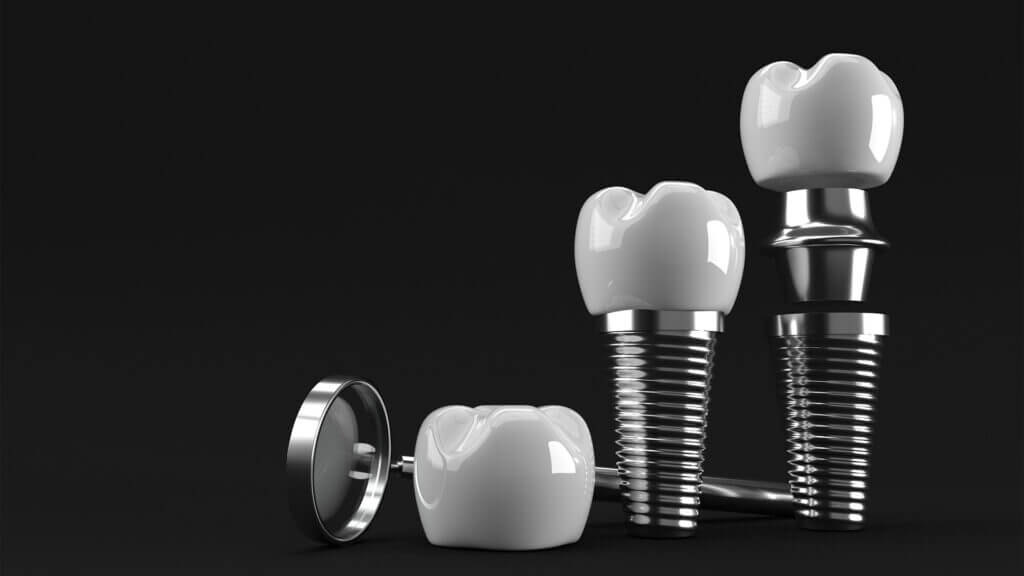Table of Contents
ToggleWhat are Type of dental implants ? Types, Procedure and Costs
Understanding the Different Types of Dental Implants
Dental implants offer a long-term solution for missing teeth, ranging from single-tooth replacements to full-mouth restorations. This guide explores the types of dental implants, the materials used, and the costs involved, helping patients make informed decisions about their oral health.
What is a Dental Implant?
A dental implant consists of a screw-like sterilized metal post inserted into the jawbone, serving as a foundation for an artificial tooth. This artificial tooth can be a crown, bridge, or denture, depending on the patient’s needs. Implants closely mimic natural teeth in appearance and functionality. There are different types of teeth implants, each designed to cater to specific dental conditions and patient preferences. For those requiring extensive restoration, types of full mouth dental implants provide a comprehensive solution, ensuring durability and a natural look. While all surgeries involve some risks, dental implants are generally safe with a high success rate (Zaheer Kola et al., 2015).
Types of Dental Implants
1. Single-Tooth Implants
One of the most common implant procedures, a single-tooth implant replaces an individual missing tooth without affecting adjacent teeth. The implant acts like a natural tooth root, providing stability and comfort.
- Advantages: Feels and functions like a real tooth, easy to clean, and preserves natural spacing.
- Best For: Patients missing one or two teeth.
2. Implant-Supported Bridges
Instead of using natural teeth as anchors, this type of bridge relies on implants for support. It is an excellent option when multiple teeth are missing in a row.
3. Full-Mouth Implants
A full-mouth dental implant procedure replaces all teeth using multiple implant posts. This option is often preferred over dentures for better durability and stability.
Types of Dental Implants Materials
The materials used in dental implants play a crucial role in their durability and biocompatibility. The most common materials include:
- Titanium – The most widely used material due to its strength, biocompatibility, and ability to integrate with bone.
- Zirconia – A metal-free alternative for patients with metal allergies or aesthetic concerns, offering a natural tooth-like appearance.
- Polymer-Based Implants – A newer alternative that provides flexibility and lightweight properties.
Types of Dental Implants Cost
The cost of dental implants varies based on the type of implant, materials used, and the complexity of the procedure.
- Single-Tooth Implant: Ranges from $500 to $5,000, depending on the implant type and crown material.
- Front Tooth Replacement: More expensive due to aesthetic considerations, requiring high-quality, natural-looking crowns.
- Implant-Supported Bridges: Cost varies based on the number of missing teeth and required implants.
- Full-Mouth Implants: The most expensive option, often exceeding $20,000, but offers the closest experience to natural teeth.
Single Implants vs. Multiple Implants
Understanding the Different Types of Dental Implants
Dental implants are a revolutionary solution for replacing missing teeth, offering both functional and aesthetic benefits. Treatment options can be categorized into two primary groups: single implants and multiple implants.
Single Implants
Single implants are ideal for patients missing one or two adjacent teeth and provide a one-to-one ratio of dental roots to implants, ensuring a strong and healthy outcome (Elawady et al., 2024). The key advantage of single implants is their ability to function like natural teeth, preserving surrounding bone and gum structure.
A single dental implant consists of:
- Implant Post – A titanium or zirconia post inserted into the jawbone, acting as an artificial root.
- Abutment – A small connector screw that secures the crown to the implant.
- Crown – A custom-made replacement tooth, often crafted from porcelain, ceramic, or metal, designed to blend with natural teeth.
For missing front teeth, tooth-colored porcelain crowns are commonly used for a more natural appearance.
Multiple Implants
For patients with multiple missing teeth, three or more dental implants can be placed in the jawbone to support a fixed bridge or fixed overdenture (Zaheer Kola et al., 2015). Unlike traditional dentures, this solution remains fixed in place, providing better stability and comfort.
Benefits of multiple implants:
- Prevents bone loss and maintains jaw structure.
- Provides a natural feel and function, similar to real teeth.
- Eliminates the need for removable dentures.
Types of Dental Implants Brands
There are several well-known types of dental implants brands, each offering high-quality solutions tailored to different patient needs. Some of the top brands include:
- Straumann – A global leader in implant technology, known for its precision and durability.
- Nobel Biocare – Specializes in innovative implant designs, including All-on-4 solutions.
- Zimmer Biomet – Offers advanced surface technology for improved osseointegration.
- Dentsply Sirona – A trusted brand with a wide range of implant options.
- BioHorizons – Focuses on bone preservation and faster healing times.
Each brand has unique advantages, and the choice depends on the patient’s needs, budget, and the dentist’s recommendation.

Understanding the different types of dental implants
Understanding the Different Types of Dental Implants
Understanding the different types of dental implants is crucial for planning a successful treatment. Various factors contribute to the classification of implants, including the material used, the size of the implant, and the method of insertion into the jawbone. These aspects must be carefully assessed to create a personalized dental implant treatment plan.
For patients considering treatment abroad, it is important to explore affordable yet high-quality options. The average cost of dental implants in Turkey is significantly lower compared to many Western countries, making it a popular destination for those seeking cost-effective dental care without compromising on quality.
At Kristal Clinic, we offer Affordable Teeth Implants designed to provide long-lasting and natural-looking results. Our expert team ensures top-tier treatment, helping patients regain their confidence with a bright and healthy smile.
For those searching for the best place in Turkey for dental implants, Kristal Clinic stands out as a leading provider of advanced implant solutions, offering cutting-edge technology and personalized care for each patient.
When considering tooth replacement options, patients often compare bridging of teeth with dental implants. While bridges can be effective, implants typically offer greater longevity and stability, making them a preferred choice for long-term dental health.
For those exploring Clear Choice Dental Implants, it’s essential to understand the benefits and differences between various implant options. Our specialists at Kristal Clinic can guide patients in selecting the best solution based on their needs, ensuring high-quality results and lasting satisfaction.
Patients considering dental implant therapy should have a basic understanding of these different types to make informed decisions. This guide outlines the different types of dental implants and the criteria used to determine the most suitable option.
Types of Dental Implants
The main types of dental implants include:
- Removable Dental Implant Dentures – Provide flexibility for patients who prefer removable prosthetics.
- Fixed Dental Implant Dentures – Offer a permanent solution that remains in place.
- Single Dental Implants – Ideal for replacing a single missing tooth.
- All-on-Four Implants – Four strategically placed implants support a full arch of teeth.
- All-on-Six Implants – Similar to All-on-Four but with six implants for added stability.
- Mini Dental Implants – Smaller in size, ideal for patients with minimal bone structure.
Additionally, the length and width of implants vary:
- Length: Can range from short implants (8mm) to long implants (16mm).
- Width: Can range from narrow (3.5mm) to wider implants (6mm), depending on bone density.
Types of Dental Implants Cost One Tooth
The cost of a single dental implant depends on several factors, including the implant material, brand, and the complexity of the procedure. On average:
- Basic single-tooth implant: $500 – $3,000
- Premium single-tooth implant (with a high-quality crown): $3,000 – $5,000
- Front tooth replacement (aesthetic-focused): Higher cost due to natural appearance and materials used.

Single tooth implants: Ideal for replacing individual missing teeth
Understanding the Cost and Types of Full Mouth Dental Implants
The loss of teeth is a significant concern for patients suffering from periodontal disease, deep cavities, or severely damaged teeth (Zaheer Kola et al., 2015). In prosthodontic dentistry, several options exist to replace missing teeth, including fixed partial dentures, implant superstructures, and fixed implant-supported dentures. The chosen treatment should be tailored to the patient’s specific needs, taking into account aesthetic concerns, functionality, biological factors, and personal preferences.
Types of Full Mouth Dental Implants
For patients missing multiple teeth, full mouth dental implants offer a permanent and natural-looking solution. Common options include:
- All-on-4 Implants – A full arch restoration supported by four strategically placed implants.
- All-on-6 Implants – Uses six implants for additional stability and support.
- Implant-Supported Dentures – A hybrid between implants and removable dentures, offering enhanced stability.
- Fixed Full-Arch Bridges – A permanently fixed implant-supported bridge replacing all missing teeth.
Each type has its own advantages in terms of durability, function, and cost.
Types of Dental Implants Cost Full Mouth
The cost of full mouth dental implants varies depending on the procedure, materials used, and location. Estimated costs include:
- All-on-4 implants: $15,000 – $30,000 per arch
- All-on-6 implants: $20,000 – $35,000 per arch
- Full mouth implant-supported dentures: $25,000 – $50,000
- Fixed full-arch bridges: $30,000 – $60,000
Factors influencing cost include:
- Implant material (Titanium vs. Zirconia)
- Dental clinic location
- Dentist’s expertise
- Additional bone grafting or sinus lift procedures
Types of Dental Implants Cost with Insurance
Some dental insurance plans cover part of the cost of full mouth dental implants, particularly if tooth loss was due to injury or medical conditions. However, coverage varies:
- Basic insurance plans may cover preliminary procedures such as extractions, X-rays, or bone grafting.
- Comprehensive insurance plans might cover apercentage of implant costs, typically 50% up to an annual limit.
- Financing options and dental discount plans can help reduce out-of-pocket expenses.
Patients should check with their insurance providers to understand their coverage options and explore payment plans for more affordable treatments.
The cost of different dental implant types
Cost and Effectiveness of Dental Implants: A Global Perspective
Dental implant rehabilitation has become an essential part of modern dentistry, providing patients with a long-term solution for missing teeth. With high success and satisfaction rates, it is widely accepted across different populations. However, one of the biggest challenges for both patients and clinicians is the high overall cost of dental implants.
A well-trained team can effectively reduce costs by utilizing different types of dental implants that offer affordability without compromising quality. The overall cost includes:
- Initial investigations (X-rays, CT scans)
- Clinical setup and surgical costs (surgeon & assistant fees)
- Fabrication and placement techniques
- Types of implant materials
- Topographic and anatomic considerations (use of surgical guides and templates)
Research has focused on dual-purpose stents, which enhance accuracy and convenience for clinicians while reducing costs for patients (Zaheer Kola et al., 2015). However, understanding the most cost-effective implant systems requires research-based knowledge to ensure both affordability and optimal patient satisfaction.
Types of Dental Implants Cost in the USA
The cost of dental implants in the USA varies significantly depending on the complexity of the procedure, the materials used, and the location of the clinic. Estimated costs include:
- Single Dental Implant: $3,000 – $6,000 (including abutment and crown)
- All-on-4 Implants: $15,000 – $30,000 per arch
- All-on-6 Implants: $20,000 – $35,000 per arch
- Full Mouth Dental Implants: $35,000 – $60,000
Factors affecting implant costs in the USA:
- Type of implant brand and material (Titanium vs. Zirconia)
- Additional procedures (bone grafting, sinus lift)
- Insurance coverage and financing options
Types of Dental Implants Cost in India
In India, dental implant procedures are significantly more affordable due to lower labor and operational costs, while still maintaining high standards of care. Estimated costs include:
- Single Dental Implant: $300 – $1,000
- All-on-4 Implants: $3,500 – $8,000 per arch
- All-on-6 Implants: $5,000 – $12,000 per arch
- Full Mouth Dental Implants: $7,000 – $15,000
Reasons for lower costs in India:
- Lower clinic operational costs
- Affordable yet high-quality implant brands
- Competitive pricing due to high patient demand
- Medical tourism, attracting international patients
What Should I Expect After a Dental Implant Procedure?
Types of Dental Implants and Treatment Considerations
Single-Tooth Replacements with an Implant and a Crown
- Involves a one-piece implant, where the abutment and implant are combined.
- Ideal for replacing one missing tooth without affecting adjacent teeth.
Implant Bridges
- Multiple implants connected together in one fixed structure.
- Unlike dentures, this provides permanent teeth replacement fixed to the jaw.
Fixed Hybrid Dentures
- Involves up to six implants on the top and bottom.
- Screws securely fix the hybrid denture to the jaw.
- A protective bridge covers the screw holes for added support (Zaheer Kola et al., 2015).
Removable Dentures (Implant-Supported)
- Requires four implants on the top and four on the bottom (two placed at an angle).
- A bar is securely attached to the abutments, with clips on the denture for stability.
- The bar prevents denture movement, providing better comfort than traditional removable dentures.
How Long Does a Dental Implant Procedure Take?
- The recommended healing time before the next step is typically3 to 6 months, depending on the implant location:
- Lower jaw implants: ~3 months for osseointegration (fusion with bone).
- Upper jaw implants: 4–6 months due to lower bone density.
- Same-day implants exist, but their success rates may be lower than traditional implants.
- Longer healing times improve success rates, making it important not to rush the process.
Pros and Cons of Dental Implants
Pros:
✅ Stronger Jawbone – Implants stimulate the bone, preventing shrinkage after tooth extraction.
✅ Prevents Adjacent Teeth Shifting – Avoids misalignment and further tooth loss.
✅ Durability – With proper care, implants can last a lifetime.
✅ Better Chewing and Comfort – Feels more natural than dentures or bridges.
Cons:
❌ High Initial Cost – Dental implants are more expensive upfront compared to bridges or dentures.
❌ Long Healing Time – Proper integration into the jawbone takes several months.
❌ Daily Oral Care Required – Brushing and flossing after meals is necessary to prevent food accumulation.
What are endosteal implants, and how are they placed?
Endosteal implants are surgically placed into the jawbone, typically made of titanium. They serve as a foundation for single tooth replacements, bridges, or dentures.
Can you explain subperiosteal implants and when they are used?
Subperiosteal implants rest on top of the jawbone, just beneath the gum tissue. They are suitable for individuals with minimal bone height or those who prefer to avoid bone augmentation procedures.
What are zygomatic implants, and in which cases are they recommended?
Zygomatic implants anchor to the cheekbone (zygomatic bone) and are used when patients have severe bone loss in the upper jaw, eliminating the need for bone grafting.
How do All-on-4 implants work, and what advantages do they offer?
All-on-4 dental implants use only four strategically placed implants to restore an entire arch of teeth. They provide a quicker recovery time and immediate results, making them a cost-effective option for full-mouth restorations.
What factors should be considered when choosing the right type of dental implant?
Factors like oral health, bone structure, and personal preferences should influence the choice of implant. It's essential to have a comprehensive consultation with a dental professional to determine the most suitable option.
Are there any other types of dental implants not mentioned here?
While endosteal, subperiosteal, zygomatic, and All-on-4 implants are among the most common, there may be other specialized implant types used in specific cases. Consult with a dental professional for tailored recommendations.
V Benakatti, JA Sajjanar, AR Acharya – J. Evol. Med. Dent. Sci, 2021 – researchgate.net. Dental implant abutments and their selection—A review. researchgate.net
Cited by 14
N Jambhulkar, S Jaju, A Raut – Materials Today: Proceedings, 2022 – Elsevier. Surface modification techniques for different materials used in dental implants review. researchgate.net
Cited by 17
L Fiorillo, M Cicciu, TF Tozum, M Saccucci, C Orlando… – Materials, 2022 – mdpi.com. Endosseous dental implant materials and clinical outcomes of different alloys: A systematic review. mdpi.com
Cited by 26
JC Kim, M Lee, ISL Yeo – Materials Horizons, 2022 – pubs.rsc.org. Three interfaces of the dental implant system and their clinical effects on hard and soft tissues. rsc.org
Cited by 47
P Nimmawitt, AAA Aliyu, B Lohwongwatana… – Materials, 2022 – mdpi.com. Understanding the stress distribution on anatomic customized root-analog dental implant at bone-implant interface for different bone densities. mdpi.com
Cited by 15
I Sailer, D Karasan, A Todorovic… – Periodontology …, 2022 – Wiley Online Library. Prosthetic failures in dental implant therapy. wiley.com
Cited by 198

